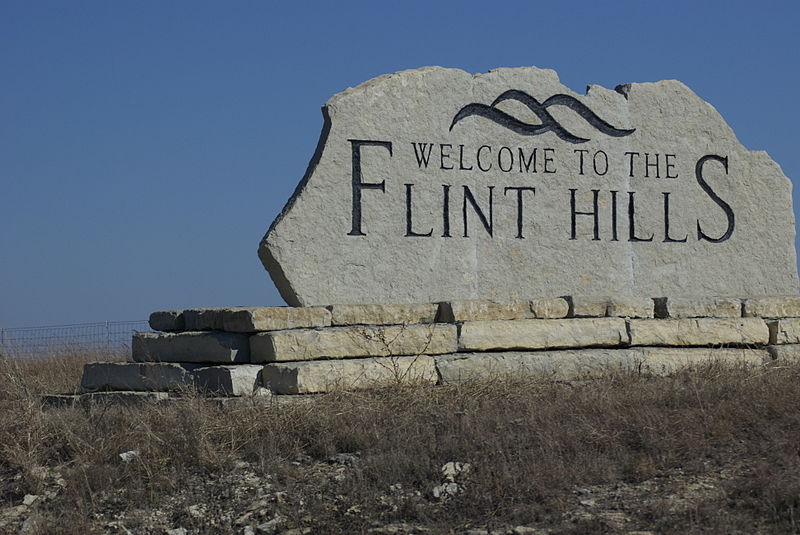The Flint Hill Wildman: The Victims June 8, 2015
Author: Beach Combing | in : Modern , trackbackThis is the best wild man story yet, it reads like a very bad film, but, like many bad films, the story is compulsive. It came from the Cincinnati Enquirer.
Many most mysterious and startling events have occurred in this county in the last last three years, and, by a most terrible and sensational discovery made in the Flint Hills a key has been obtained to the series of mysteries.
Next come the victims. Victim one, Katie.
In July, 1883, a family by the name of Fentwek arrived from New York, and proceeded by team to a spot a near the south-west corner of the county, where they camped. Being in search of health and having at command a plentiful supply of money, they made their camp a pleasant place, and seemed to be supremely happy. The birthday of the youngest child, little Katie, took place about a week after their arrival, and the event was celebrated by a little feast and jollification. Her father ever indulgent yielded to the wish of the little maiden and presented her with a locket of antique workmanship, and of considerable value. After the happy dinner was over, Katie, the child strayed, laughing and singing, away from the camp, and was never seen again. Becoming alarmed at her prolonged absence the father made a frantic but fruitless search. Almost distracted with grief he returned to camp just in time to seek shelter from the most violent storm that probably ever visited Chautanqua County. Trees were uprooted and the brawling streams became overflowing rivers. When the tempest subsided a search party was got together, but although among them were some of the most expert trackers in the Cherokee Nation no trace of Katie could be discovered. It was believed that she had been drowned in some of the swollen streams.
Victim Two
Early in December George Bitters, the half-breed mail-carrier, started on his tri-weekly trip from Sedan to Peru, and never arrived. His horse was found by a searching party quietly feeding in the dense timber and stripped of saddle and bridle.
Victim Three
In the spring of the next year, Elmer Johnson started out to hunt squirrels, and failed to return. His gun was found with the stock smashed and beside it lay his hat with a profusion of blood upon it, but the boy himself had disappeared as mysteriously as the others. It was thought at the time that he had been killed by either a bear or a puma.
Victim Four
Last September a party of young men, who had been camping just across the line in the Territory, arrived in Sedan, and told of finding a covered waggon with the skeletons of two horses tied to it [amazing image]. Upon investigation the facts were found to be as they had stated. The waggon was old and weather-beaten, and as near as could be judged, had been in the same, position for as much as a, year. Its contents were a few unimportant articles. No trace of human beings could be found.
Victim Five
On February 12 Oscar Beach, in company with Frank Reveor, a half Creek and mulatto, was hunting within a half mile of the Nation line. They separated, and Beach was never again seen. The halt-breed was suspected of having murdered his companion, but nothing came of it.
Anything on the Flint Hill wildman: drbeachcombing AT yahoo DOT com
Resolution tomorrow.
29/06/2015: Wade has come up with another link… Thanks, Wade!
30/06/2015: Bruce T writes, ‘I’ve got couple of takes on it from a historical perspective. What it revolves around is the era of “Bloody Kansas”, the following Civil War and the period of lawlessness in the two decades following the war. The fighting along the Kansas-Missouri border, which resembled ethnic cleansing before and during the war, and the lawlessness/retribution that took place in the following years.(think of the James Gang, former Confederate guerrillas and others like them from both sides.). My primary view is the “Wildman” was a refugee who headed for the Flint Hills as a boy to escape the violence, a type of warfare where no one was safe and no quarter given to civilians. The Flint Hills are in the region where the warring for Bloody Kansas and much of the incessant raiding and killing of the Civil War period took place. In this scenario, I see a fellow who was probably traumatized to the point that he lost touch with reality and defended his territory violently against any perceived threat, including innocents who happened to wander too close. As railroads began to deliver more settlers to the region in the 1880’s, the chance of the Wildman encountering people in the near his cave became inevitable. I would like to know more about the cave itself, as it involves my alternative version. It is quite possible that the cave served as base/hideout or supply cache for one of the local militias. Perhaps the Wildman was a traumatized combatant that did work around base camp, then continued to reside there after the end of hostilities? A Great Plains version of Japanese soldiers hiding out in the wilds of the islands of the Philippines. He may have seen what he was doing as protecting the base for his comrades who were never going to return.
29 Aug 2015: little gator writes in with this link.



